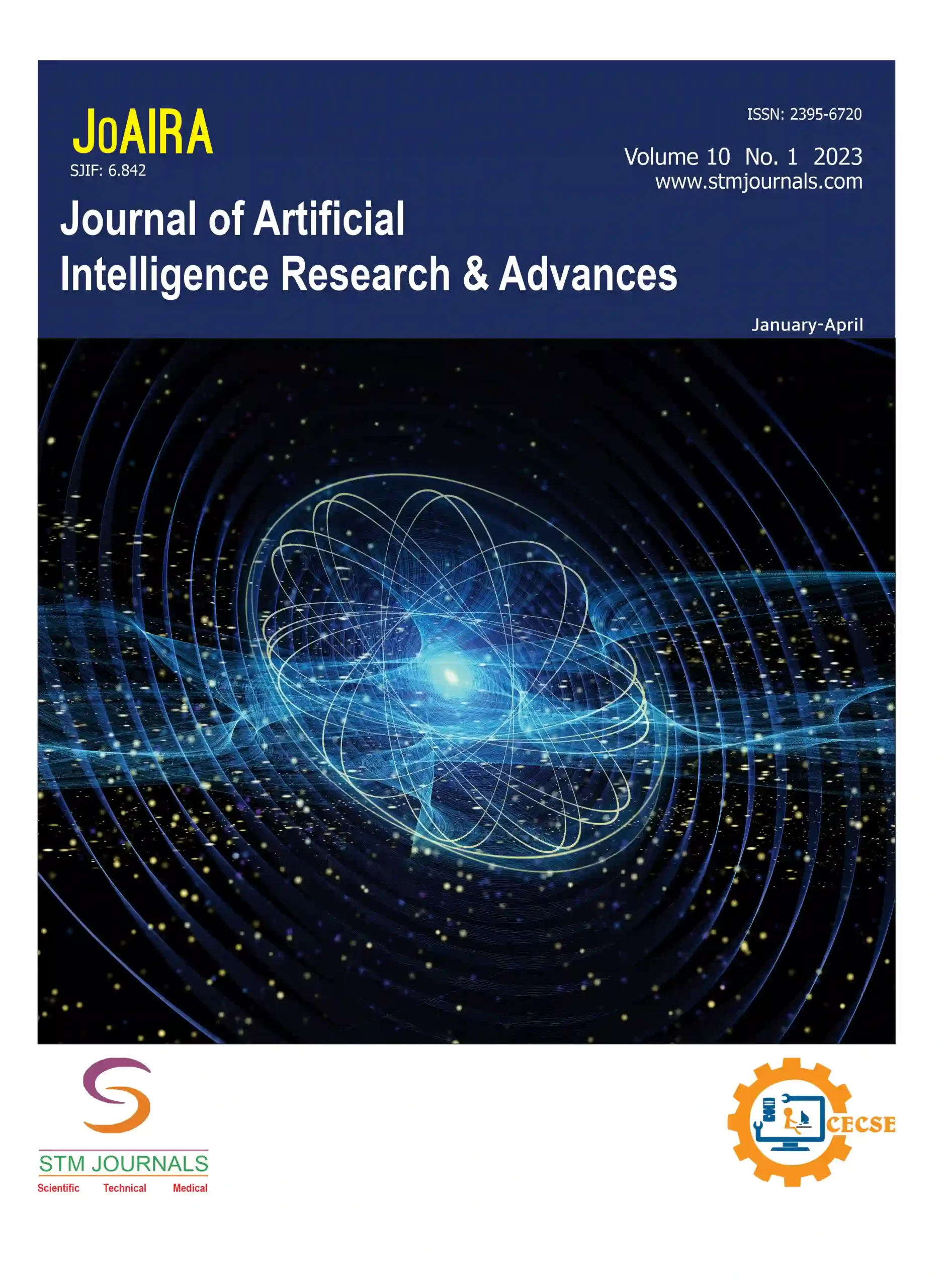
S. Shenbaha

V. Sreepriya
- Assistant Professor Department of Computer Science with Data Analytics, Dr. N. G. P. Arts and Science College, Coimbatore Tamil Nadu India
- Student Department of Computer Science with Data Analytics, Dr. N. G. P. Arts and Science College, Coimbatore Tamil Nadu India
Abstract
Advancements in agricultural technology and the integration of artificial intelligence for diagnosing plant and leaf diseases are crucial for sustainable agricultural development. Conditions like early blight and late blight exert a notable influence on both the quality and quantity of potato harvests. Identifying these leaf diseases manually demands significant labor and a considerable level of expertise. Therefore, efficient, and automated methods for disease detection are essential to improve potato production. This study introduces a model that utilizes pre-trained models like VGG16 for fine-tuning via transfer learning to extract relevant features from the dataset. The dataset is sourced from a publicly available plant database. Several trained models are employed to detect and categorize both diseased and healthy leaves. The system achieves an impressive testing accuracy of 99.23%, with 25% test data and 75% train data split. The results demonstrate that machine learning surpasses existing methods in potato disease detection. This research underscores the significance of leveraging advanced technologies in agriculture to address crucial challenges and improve productivity.
Keywords: Feature extraction, VGG16, convolutional neural network (CNN), transfer learning fine-tuning
[This article belongs to Journal of Artificial Intelligence Research & Advances(joaira)]
References
- Ali A. Plant Village Dataset, version 1. Kaggle. 2019. Available from: https://www.kaggle.com/xabdallahali/plantvillage-dataset. Accessed on 22 February 2020.
- Badar MP, Girish A. Detection and Classification System for Potato Leaf Diseases. 2016.
- Islam M, Dinh A, Wahid K, Bhowmik P. Detection of potato diseases using image segmentation and multiclass support vector machine. In: IEEE 30th Canadian Conference on Electrical and Computer Engineering (CCECE); Windsor, ON. 2017. p. 1–4. DOI: 10.1109/CCECE.2017.794
- Kumari CU, Jeevan Prasad SJ, Mounika G. Leaf disease detection: Feature extraction with K-means clustering and classification with ANN. In: 3rd International Conference on Computing Methodologies and Communication (ICCMC); Erode, India. 2019. p. 1095–1098. DOI: 10.1109/ICCMC.2019.8819750.
- Li G, Ma Z, Wang H. Image Recognition of Grape Downy Mildew and Grape Powdery Mildew Based on Support Vector Machine. IFIP Adv Inf Commun Technol. 2012;151–162. DOI: 10.1007/978-3-642-27275-2_17.
- Chen J, Liu Q, Gao LW. Visual Tea Leaf Disease Recognition Using a Convolutional Neural Network Model. Symmetry. 2019;11:343. DOI: 10.3390/sym11030343.
- Simonyan K, Zisserman A. Very deep convolutional networks for large-scale image recognition. Comput Biol Learn Soc. 2015. p. 1–14.
- Evgeniou T, Pontil M. Theory and applications of support vector machines. IFIP Adv Inf Commun Technol. 2001;2049:249–257. DOI: 10.1007/3-540-44673-7_12.
- Li Y, Wu H. A clustering method based on K-means algorithm. Phys Procedia. 2012;25:1104–1109. DOI: 10.1016/j.phpro.2012.03.206.
- Huang D, Shan C, Ardabilian M, Wang Y, Chen L. Local binary patterns and its application to facial image analysis: A survey. IEEE Trans Syst Man Cybern C. 2011;41:765–781. DOI: 10.1109/TSMCC.2011.2118750.
- Biswas S, Jagyasi B, Singh BP, Lal M. Severity identification of potato late blight disease from crop images captured under uncontrolled environment. In: IEEE Canada International Humanitarian Technology Conference (IHTC); Montreal, QC. 2014. DOI: 10.1109/IHTC.2014.
- Hossain S, Mou RM, Hasan MM, Chakraborty S, Razzak MA. Recognition and detection of tea Leaf’s diseases using support vector machine. In: IEEE Publications; 2018. p. 150–154. DOI: 10.1109/CSPA.2018.8368703.
- Prakash RM, Saraswathy GP, Ramalakshmi G, Mangaleswari KH, Kaviya T. Detection of leaf diseases and classification using digital image processing. In: International Conference on Innovations in Information, Embedded and Communication Systems (ICIIECS); 2017. p. 1–4. DOI: 10.1109/ICIIECS.2017.8275915.
- Howlader MR, Habiba U, Faisal RH, Rahman MM. Automatic recognition of guava leaf diseases using deep convolution neural network. In: International Conference on Electrical, Computer and Communication Engineering (ECCE); 2019. p. 1–5. DOI: 10.1109/ECACE.2019.8679421.
- Waghmare H, Kokare R, Dandawate Y. Detection and classification of diseases of grape plant using opposite colour local binary pattern feature and machine learning for automated decision support system. In: 3rd International Conference on Signal Processing and Integrated Networks (SPIN); 2016. p. 513–518. DOI: 10.1109/SPIN.2016.7566749.
- Ramcharan A, Baranowski K, McCloskey P, Ahmed B, Legg J, Hughes DP. Deep Learning for Image-Based Cassava Disease Detection. Front Plant Sci. 2017;8:1852. DOI: 10.3389/fpls.2017.01852. PubMed: 29163582.
- Peng CYJ, Lee KL, Ingersoll GM. An introduction to logistic regression analysis and reporting. J Educ Res. 2002;96:3–14. DOI: 10.1080/00220670209598786.
- Krizhevsky A, Sutskever I, Hinton GE. ImageNet classification with deep convolutional neural networks. Commun ACM. 2017;60:84–90. DOI: 10.1145/3065386.
- Szegedy C, Vanhoucke V, Ioffe S, Shlens J, Wojna Z. Rethinking the Inception Architecture for Computer Vision. CVPR. 2016. DOI: 10.1109/CVPR.2016.308.
- Peterson L. K-nearest neighbor. Scholarpedia. 2009;4:1883. DOI: 10.4249/scholarpedia.1883.
- Shani G, Erlich O, Tsror L, Oppenheim D. Deep learning for image-based potato tuber disease detection. Phytopathology. 2018;109. DOI: 10.1094/PHYTO-08-180288-R.
- Fuentes A, Yoon S, Kim SC, Park DS. A robust deep-learning-based detector for real-time tomato plant diseases and pests recognition. Sensors. 2017;17:2022. DOI: 10.3390/s17092022. PubMed: 28869539.
- Barré P, Stöver BC, Müller KF, Steinhage V. LeafNet: A computer vision system for automatic plant species identification. Ecol Inform. 2017;40:50–56. DOI: 10.1016/j.ecoinf.2017.05.005.
- Lindeberg T. Scale invariant feature transform. Scholarpedia. 2012;7. DOI: 10.4249/scholarpedia.
- Schieber MM, Zuck A, Braiman M, Melekhov L, Nissenbaum J, Turchetta RAD, et al. Large-area HgI2 pixel detector experiments. SPIE Proc. 1998. DOI: 10.1117/12.304564.
- Pinki FT, Khatun N, Islam SMM. Content based paddy leaf disease recognition and remedy prediction using support vector machine. In: 20th International Conference of Computer and Information Technology (ICCIT); Dhaka. 2017. p. 1–5. DOI: 10.1109/ICCITECHN.2017.8281764.

Journal of Artificial Intelligence Research & Advances
| Volume | 11 |
| Issue | 01 |
| Received | February 29, 2024 |
| Accepted | April 7, 2024 |
| Published | April 22, 2024 |

